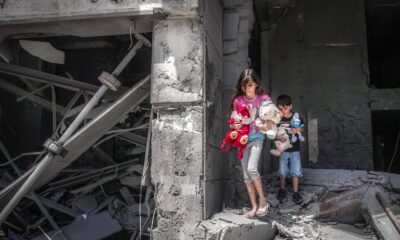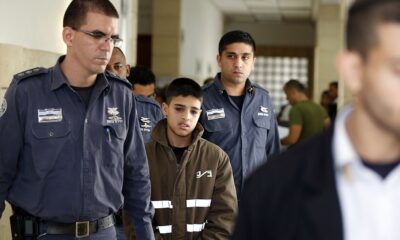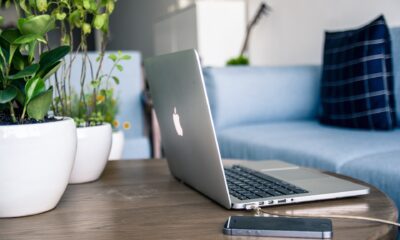Children
Israel’s Detention of Palestinian Children
Published
2 years agoon


Israel’s detention of Palestinian children is a recurring occurrence. Palestinian children in the occupant state of Israel are the only children in the world who are regularly convicted through a military system instead of a civilian one. Even the ones under the age of twelve are treated like criminal offenders and thrown in prisons such as Ofer, Damoun, Megiddo, and more.
Ever since 1969, the Israeli Offense Forces have detained over one million Palestinians, counting over 50,000 children. The most prevalent offense is striking a stone, for which detainees face a prison sentence up to 20 years.
Also Read: Israel having free season on Palestinian civilians including Children and Journalists
According to the Palestinian Prisoners Society, more than 1,150 minors were unlawfully and violently detained by the Israeli Offense Forces in 2021. 160 of which are still imprisoned as security detainees, and some are kept under the internationally-banned administrative detention.
Figures published by Israeli Prison Service revealed that amongst the prisoners forced into isolation are 66 minors. All aforementioned prisoners were held in complete solitary confinement in the first ten months of 2021.
According to the Palestinian Prisoners Society, more than 1,150 minors were unlawfully and violently detained by the Israeli Offense Forces in 2021. 160 of which are still imprisoned as security detainees, and some are kept under the internationally-banned administrative detention. Figures published by Israeli Prison Service revealed that amongst the prisoners forced into isolation are 66 minors. All aforementioned prisoners were held in complete solitary confinement in the first ten months of 2021.
Also Read: Children of Palestine: A childhood lost to trauma without an end
Most of the detention happens at nighttime, some minors are arrested on their way to school at military checkpoints, where they get handcuffed, thrown on the floor, and stepped on their backs as well.
Adolescent detainees have reported that after arrest, they were taken to interrogation cells, where they were made to lie face down on the metal floor of military vehicles, were denied bathroom breaks, were refused food and water, and were exposed to physical, verbal, emotional, and –in some cases– sexual assault.
Defense for Children International – Palestine conducted an operation in which the center collected data that spanned five years from 681 child detainees, who described their arrest, interrogation, and detention experiences.
The results showed that:
- Over half were arrested at night
- 85% were not told why they got detained
- 97% had their hands shackled; 88% were blindfolded
- 75% were subjected to physical abuse
- 58% they were exposed to verbal harassment, degradation, or intimidation
- 54% were moved from the place of their arrest on the floor of a military vehicle
- 83% were strip searched
- 40% were denied adequate food and water
- 31% were denied access to a toilet
- 67% were not properly informed of their rights
- 97% were interrogated without a family member present
- 55% were shown or made to sign a paper in Hebrew
- 36% were threatened or coerced
- 25% were subjected to stress positions
- 23% were detained in solitary confinement for interrogation purposes for a period of two or more days
Similarly, Save the Children consulted more than 470 previously jailed minors from across the West Bank over the last decade in their Defenseless research. The research found similar results to the DCIP. The majority of children were taken from their homes at nighttime, blindfolded, with their hands forcefully shackled behind their backs. Many of the interviewees stated that they were not told why they were being arrested or where they were being taken.
Also Read: Israel has killed 55 Palestinian journalists since 2000
One of the interviewees is Abduallah, a Palestinian kid who got arrested six times as a child. He stated to Save the Children, “They destroyed the front door, entered my room, covered my face with a bag and took me away…They told my father that I would return the next day. I returned after 12 months”.
The brutal interrogation of Palestinian minors can be best shown in this video of detainee Ahmed Manasra who was 13 at that time. The interrogators kept yelling at the detained boy and repeatedly accused of attempted murder while throwing vulgarities at him.
Also Read: Why should dignified Muslims never normalize with Israel?
The video elicited a strong reaction from Palestinians, who took to social media to express their horror at the treatment, and their admiration for what they called the teen’s endurance under tough questioning. Human rights organizations also expressed indignation about the video, claiming that the case was politicized and that human rights laws governing the treatment of minors were not being followed.
The maltreatment doesn’t stop there. In February 2021, the DCIP reported that a 15-year-old Palestinian boy detained by the Israeli Occupation was sexually assaulted in an Israeli military prison. The assailed boy told the DCIP that he was sodomized with an object, beaten while blindfolded, and had his genitals twisted and punched. The assailant further threatened that the sexual violence would continue unless the boy confessed to the allegations against him.
Also Read: Israel is and will always be a crime against humanity
“A man came to the room and told me his name was Captain Kamel,” the boy told DCIP. “He kicked me and punched me while shouting and saying I should tell him what I did. Whenever I told him I did not do anything, he would beat me harder. He threatened to shock me with electricity, but I told him I did not do anything.”
Additionally, even while the children are taken to trial –often is the first time the children get the opportunity to meet with their lawyers–, they are shackled and chained, which violates the Standard Minimum Rules for the Treatment of Prisoners Convention.
Also Read: The Reality of Palestinian Prisoners in Occupation Jails
The protocol indicates that chains and irons should never be used, and that restraints should only be used as a precaution against attempt to flee during transfer, provided that they are removed when the prisoner appears before a judicial or administrative body.
The harsh reality is that a decent percentage of minor prisoners spend more than 20 years serving prison sentences in the Israeli custody; the traumatized, freed detainees are unable to regain their old lives back after release; and care-dependent infants are forced to stay with their mothers in prison.
Also Read: Israel is and will always be a crime against humanity
Such dehumanizing maltreatment of children is a violation of of international norms such as The Convention against Torture and Other Cruel, Inhuman or Degrading Treatment or Punishment (UNCAT). And the United Nations Convention on the Rights of the Child (CRC), both of which Israel signed in 1991. Yet, no actions were ever taken by the UN.
Children
244 Million Out of School Children (Where’s Their Right to Education?)
Published
1 year agoon
April 12, 2023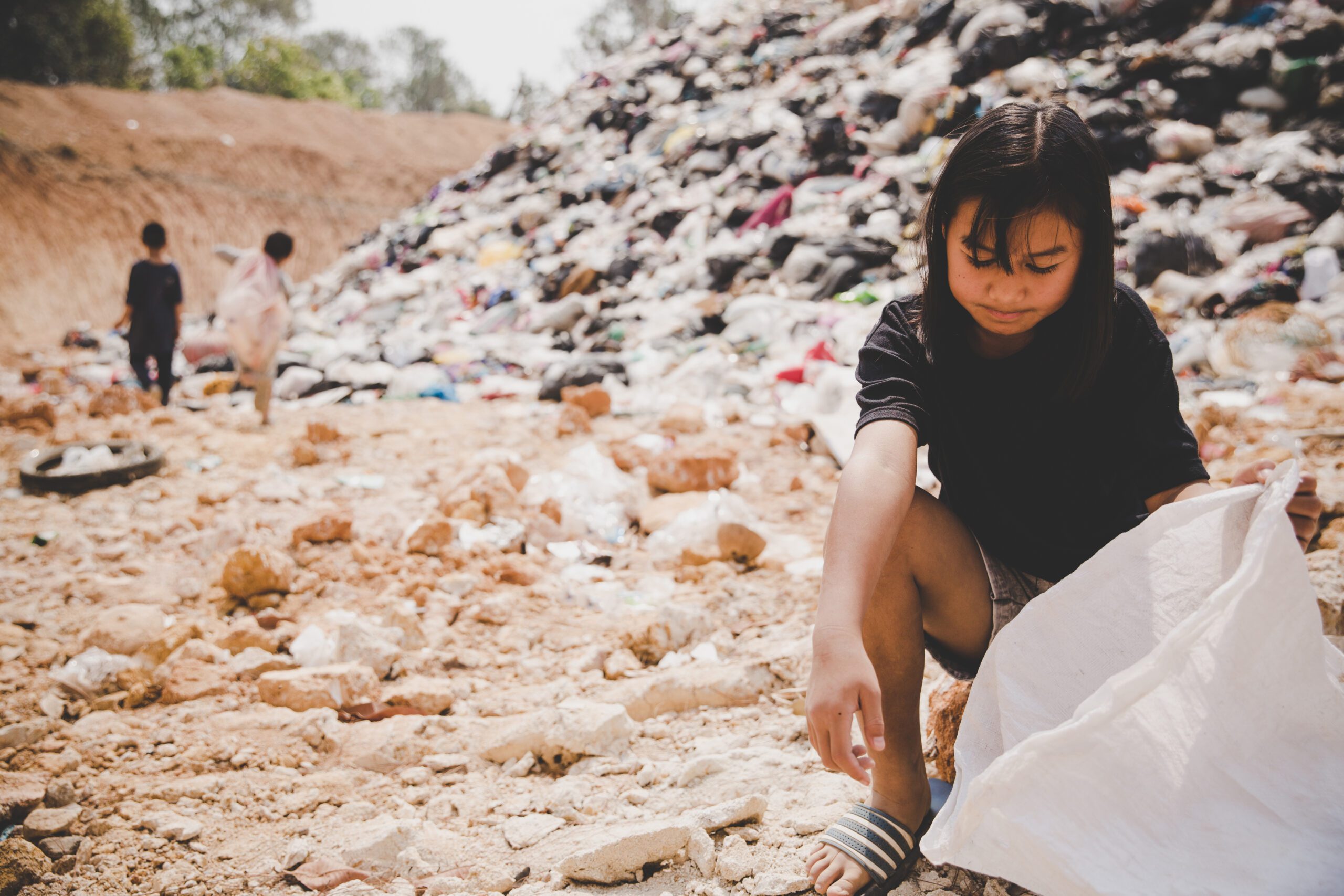

Education is the most basic right of every child. But for a staggering 224 million out of school children, education is a luxury they can’t afford.
That’s why, through this article, we are debunking the false mirage of all the “development in educational” and shedding light on:
- The current status of such millions of out-of-school children
- Major driving forces behind the education crisis globally
- Potential solutions
244 Million Out of School Children Globally
In 2022, a UNSECO report displayed that over 244 million children and youth between 6 and 18 won’t start a new school year, with the most out-of-school children in the Sub-Saharn region (98 million).
Research has shown that children are the first to bear the brunt in today’s war-torn world and calamities heightened by skyrocketing inflation and extreme climate events.
Though the numbers have come down after the sharp COVID-19 (290 million), the current wars, inflation, and climate change have left aid organizations responsible for financing universal education without sufficient funds.
Throughout the globe, there are various factors causing children to drop out of school, with some countries being hit harder than others. Nigeria, Yemen, and Afghanistan, in particular, are grappling with a staggering increase in the number of out-of-school children, largely due to the following underlying reasons.
High Inflation – Low Economic Safety
For parents unsure, if they’ll have a next meal, sending children to school is the last thing on their minds. For example, over 80 million people in Nigeria live below the poverty line. This has led the country to one of the worst national education crises.
“I miss my teacher, friends, and all my schoolmates.”
10-years old Treasure, Nigeria (source: Frace 24 English)
Security threats, extreme poverty, and lack of public schools contribute to Nigeria’s education catastrophe. Like Treasure, 20 million Nigerian children are out of school, making them highly vulnerable to child labor, abuse, and underage marriages.
8-Year Long Civil War
In Yemen, out-of-school children are at increased risk of exploitation – being forced into civil war (child soldiers), early marriages, and child labor.
Mansour, a 16-years old boy, broke his spine in an accident at work in 2019 and has been unable to walk since. Once, Mansour went to school, studied, and regularly met his friends. Now, he is completely dependent on his mother for everything.
And Mansour is not alone.
Yemen’s war has forced 2 million children out of school, wrecking their future. Moreover, 3.7 million Yemen students consistently miss school due to the withholding of teachers’ salaries (almost 2-3rd of Yemen’s teachers have not received their salary in seven years).
Taliban Takeover
Since Taliba’s takeover in 2021, Afghan women over the age of 12 have been banned from school. With the new academic year starting in March, hundreds of thousands of teenage girls remain barred from classes.
Today, 80% of Afghan girls and young women (2.5 million) are banned from school. Out of which 30% have never even gained a primary education.
Despite repeated claims of reopening schools and universities for women, the Taliban (the de facto government) has failed to follow through. The group made similar claims during its previous rule from 1996 to 2001, but the girls were banned throughout the five-year rule.
“(the ban)takes away their ability to participate in their community in a way where they can ultimately have jobs, become doctors or teachers.”
Catherine Russell, Unicef (Source: al Jazeera)
While the international community has made the right to women’s education the critical condition for aid negotiation, the Taliban is only giving empty promises in return.
Can Out of the School Children Crisis be Solved?
The out-of-school children problem is multifaceted and diverse. Almost every country’s fraction of students don’t go to school, but the numbers are significantly high in war-torn and under-developed countries. Even for students who are going to school, the quality of education and learning opportunities in such countries is vastly different.
According to a recent study by the world bank, these children are at the Irish of losing $17 trillion in lifetime earnings. And unless actions are taken, learning losses will continue to endanger the future of these children, nations, and the world.
Experts advise that providing school meals to students will encourage poverty-ridden families to send their children to school for food. But this will need funding from international governments and organizations.
Education- A Fundamental Right
The world has come a long way in making education a fundamental right. From only 1 out of every ten literate individuals two centuries ago to today’s 9 in 10 adults with essential reading and writing skills – we’ve made progress.
But, to tackle the current and looming world problems in the 21st century and beyond, we’ll need a strong team of educated people. It’s hard to imagine that even today, millions of children are growing up without the opportunity for education that we had. But the reality remains the same.
So, yes, we’ve come a long way, but a lot of work is still left to make education a fundamental right for every child globally.
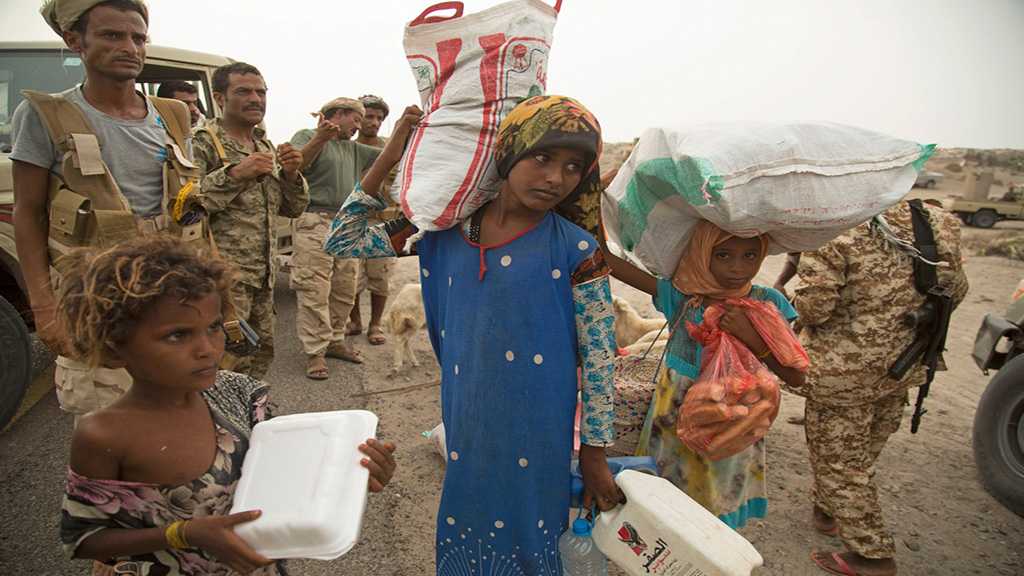

Yemen has been experiencing an armed conflict and humanitarian crisis since 2015, with seven brutal years of pain, fear, bloodshed and death. This article provides an update on the humanitarian crisis in Yemen as of February 2023.
Background to Yemen’s Humanitarian Catastrophe
Yemen’s civil war began in 2014 when Houthi insurgents—Shiite rebels with links to Iran and a history of rising against the Sunni government—took control of Yemen’s capital and largest city, Sana’a, demanding lower fuel prices and a new government.
Two-thirds of the Yemini Population is in Need of Humanitarian Assistance
As of February 2023, two-thirds of the Yemeni population requires humanitarian assistance. The “Houthis” forces backed by Iran, the Saudi/UAE-led coalition, the internationally recognized Yemeni government, and UAE-backed forces, including the Southern Transitional Council (STC), have failed to spare Yemeni civilians grave human rights violations.
There has been a flagrant disregard for international humanitarian and human rights law protections. Thus, the war has resulted in continuous incidents of abuse that have killed and injured thousands of civilians.
Nearly six million Yemenis are displaced from their homes since the beginning of the war, including 4.3 million internally displaced inside Yemen.
So far, there are no signs of the war stopping soon.
Parties to the War Responsible For Grave Human Rights Violations
Parties to the conflict in Yemen continue to commit grave human rights violations. According to a recent report by Human Rights Watch, the clashes between forces have led to continuous unlawful and indiscriminate airstrikes against civilians.
Houthi forces have used banned antipersonnel landmines and fired artillery indiscriminately into populated areas. Moreover, Houthi forces have launched indiscriminate ballistic missiles into Saudi Arabia.
Read more: Children’s Rights in Yemen Are Teetering on the Edge of A Catastrophe.
Failed Truce in April 2022
An UN-mediated truce entered force on April 2nd 2022. The truce lasted six months, ending on October 2nd 2022. However, human rights violations continued, and the truce failed as parties broke the agreement with continued fighting and hostilities.
All parties to the conflict failed to protect innocent civilians’ lives. The truce in Yemen ended as both sides rejected a proposal presented by UN Special Envoy for Yemen to extend and expand the agreement.
However, on a brighter note, the truce brought noticeable tangible benefits to the Yemeni population. For example, access to humanitarian aid improved, and widespread economic opportunities became more readily available. Furthermore, there was a considerable decrease in violence and casualties across Yemen. A report by ACLED revealed the lowest number of reported political violence-related deaths in Yemen since January 2015.
These noticeable and valuable improvements should not ignore that political violence continued in Yemen despite the truce. Worringly, 200 people died every month during the truce due to political violence.
20 Million Yeminis’ Face Food Insecurity
The humanitarian crisis hit a dangerously dire point in 2022 due to constant obstruction of aid from reaching civilians. Houthi forces and the Yemeni government continue unnecessarily imposing restrictions and regulations on humanitarian organizations and aid projects.
Moreover, enforced disappearances are a massive problem in Yemen, with little accountability or investigations. In addition, the economy’s collapse, the Covid-19 pandemic and Russia’s invasion of Ukraine have led to Yemen being one of the world’s most unsettling humanitarian disasters.
More than 20 million Yemenis are facing food insecurity and have little to no access to health care services. The war has resulted in deliberate unlawful attacks against civilian homes, hospitals, schools, and bridges. For years, these war crimes have continued with impunity.
Read more: Yemen: War crimes hidden behind rampant violations.
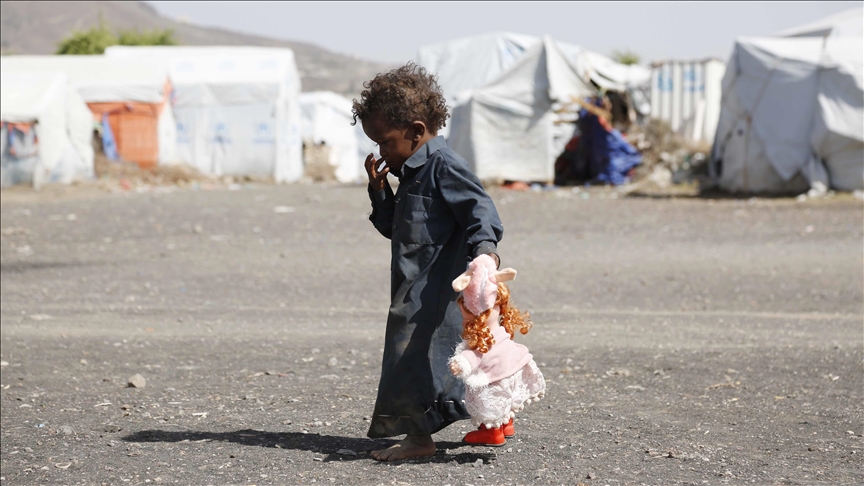

FSO Safer Threatened a Humanitarian and Environmental Catastrophe
The FSO Safer is a “ticking time bomb”, holding an estimated 1.14 million barrels of light crude oil. Since 2015, the Safer has been stranded off the coast of Yemen.
Yemen’s national oil company owns the FSO. Due to the Yemen war, all production and export operations related to FSO are suspended. However, millions of barrels of crude oil remain onboard.
The ongoing crisis in Yemen has made the Safer too dangerous to move. According to the UN, the Safer could explode or rupture anytime, threatening an environmental and humanitarian catastrophe. This dire situation could quickly become one of the worst oil spills in history, devastating Yemen and the environment. Luckily, a two-stage UN-coordinated plan to prevent the Safer from exploding or breaking apart was initiated in March 2022.
In September 2022, the UN stated it had raised sufficient funds to initiate a four-month-long operation to transfer oil from the Safer to a secure vessel. Following this first step, a second stage will involve installing a replacement vessel within 18 months. The rescue mission is estimated to cost up to $115 million for both stages.
However, despite these initiated plans, recent efforts to rescue the Safer have been unsuccessful due to the region’s ongoing conflict.
Yemini Women’s and Girl’s Rights Under Threat
The Houthi rebels continue discriminating against girls and women and restricting their freedom and rights. There have been significant systematic violations of women’s and girls’ rights. The de facto law in Houthi-controlled areas requires women to travel with a mahram (a close male relative or their husband). In addition, evidence of written permission from their male guardian will also suffice.
Women’s access to healthcare services, particularly reproductive healthcare, have severely limited since the war began. Furthermore, women’s dress code, access to education and freedom of expression is severely controlled and limited by men.
Concluding Thoughts
The eight-year war in Yemen has caused immense suffering, and a recent UNDP report estimated that the number of those killed due to Yemen’s war could reach 1.3 million by 2030. Furthermore, the death toll from Yemen’s war is estimated to reach 377,000 by the end of 2021. To put matters into perspective, an estimated 70% of those killed will be children under the age of five years.
The evidence discussed in this article reveals alarming discoveries which must be addressed immediately. Mainly associated with girls’ and women’s rights, environmental threats, food insecurities and an increased number of civilians needing humanitarian assistance. Furthermore, an increasingly worsening economy, decimated public infrastructure, and a year-on-year decline in humanitarian funding have put Yemenis’ lives under direct threat.
The situation in Yemen is a complex protection crisis at its very core. Many Yemenis struggle to live in safety and dignity and enjoy basic fundamental rights or access to essential services.
This worrying reality must be addressed and changed in 2023 with more focused attention on protecting and upholding human rights for everyone.
Children
The Repatriation of ISIS Children Detained in Camps in Northeast Syria 2022
Published
2 years agoon
December 16, 2022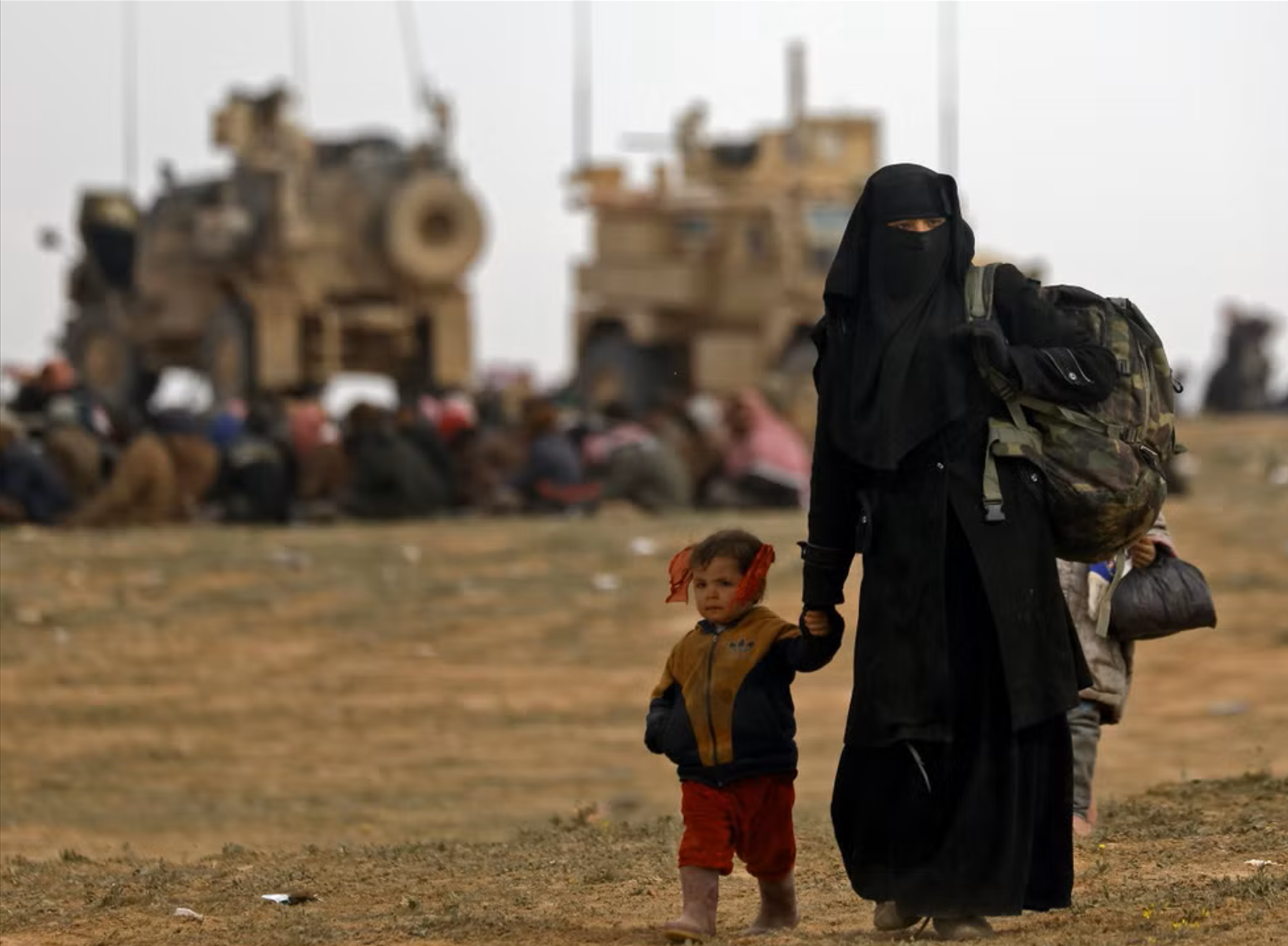

ISIS Detainees Denied Basic Human Rights
For the past four years, thousands of prisoners, primarily women and children, from the Islamic State (ISIS), have been arbitrarily detained in camps in northeast Syria. Approximatley, 42,200 people are currently detained in the camps despite the recently increased repatriation of women and children. Recent Turkish air and artillery strikes have exacerbated the dangerous circumstances in the camps. These Turkish strikes cut off electricity and stopped the water supply. They severely impacted fuel and food deliveries and detainees’ access to medical services in the Al-Hol and Roj camps.
In 2022, many children in the camps drowned in sewage pits, died in tent fires, and several were run over by water trucks. Furthermore, hundreds died from preventable illnesses due to very limited access to healthcare. Prisoners have no legal basis or the possibility of reviewing the legality of their arbitrary detention. This severely undermines international human rights protections. The prisoner’s humanitarian situation is continuously deteriorating. They are subject to inhumane and degrading conditions with limited access to basic necessities and fundamental rights.
Background to ISIS Camps
Al-Hol and Roj are two camps in northeast Syria primarily holding the wives and children of male ISIS suspects. Among the prisoners, approximately 18,000 are from Syria, 28,000 are from neighbouring Iraq, and more than 10,000 are from 60 other countries. Shockingly, the prisoners consist of 60% children. Of these children, nearly 80% are under age 12, and 30% are age five or younger.
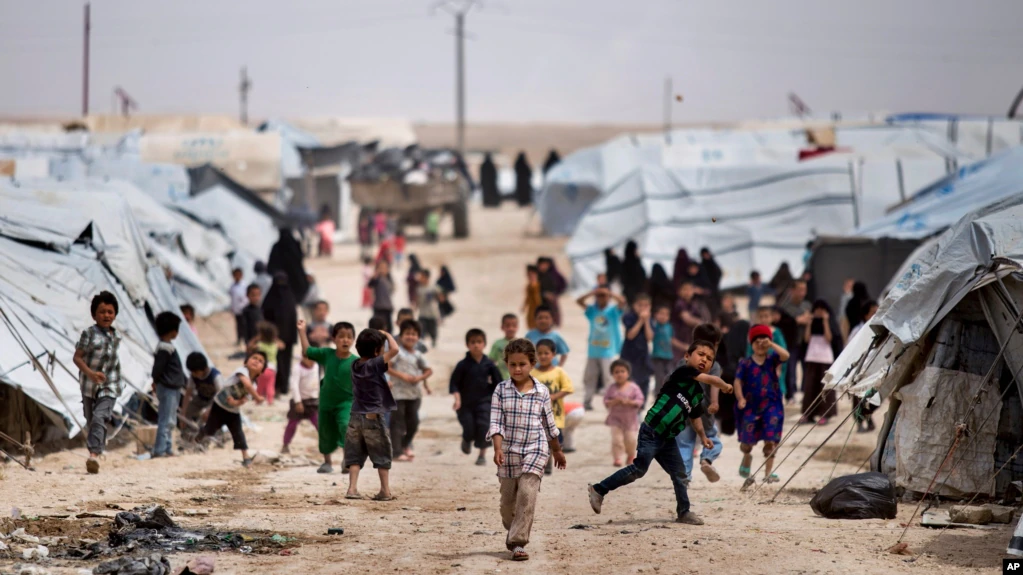

Read also: Syria: A Growing Humanitarian Crisis Amid the Russia-Ukraine Conflict.
The conditions in the camps have created a children’s rights catastrophe. The camp conditions are deplorable, as continued violence resulted in the death of nearly 100 people in 2021.
The Political and Legal Hot Potato of Repatriation
The repatriation of women and children from camps in northeast Syria has been a very controversial and complex legal issue for countries for many years. The Committee on the Rights of the Child and numerous UN Special Rapporteurs have continuously demanded that states repatriate their nationals trapped in these camps.
Unfortunately, many countries contest these demands and make inconsistent responses to the ongoing human rights violations. However, several European countries recently began to increase the repatriation of women and children from the camps. For example, Germany and Denmark repatriated 37 children and 11 women. The Netherlands repatriated five women and 11 children. Belgium repatriated 16 children and six women. Sweden repatriated 20 children and ten women. More recently, France repatriated 35 children and 16 women.
Moreover, the table below illustrates the number of children, women and men that were repatriated by country.
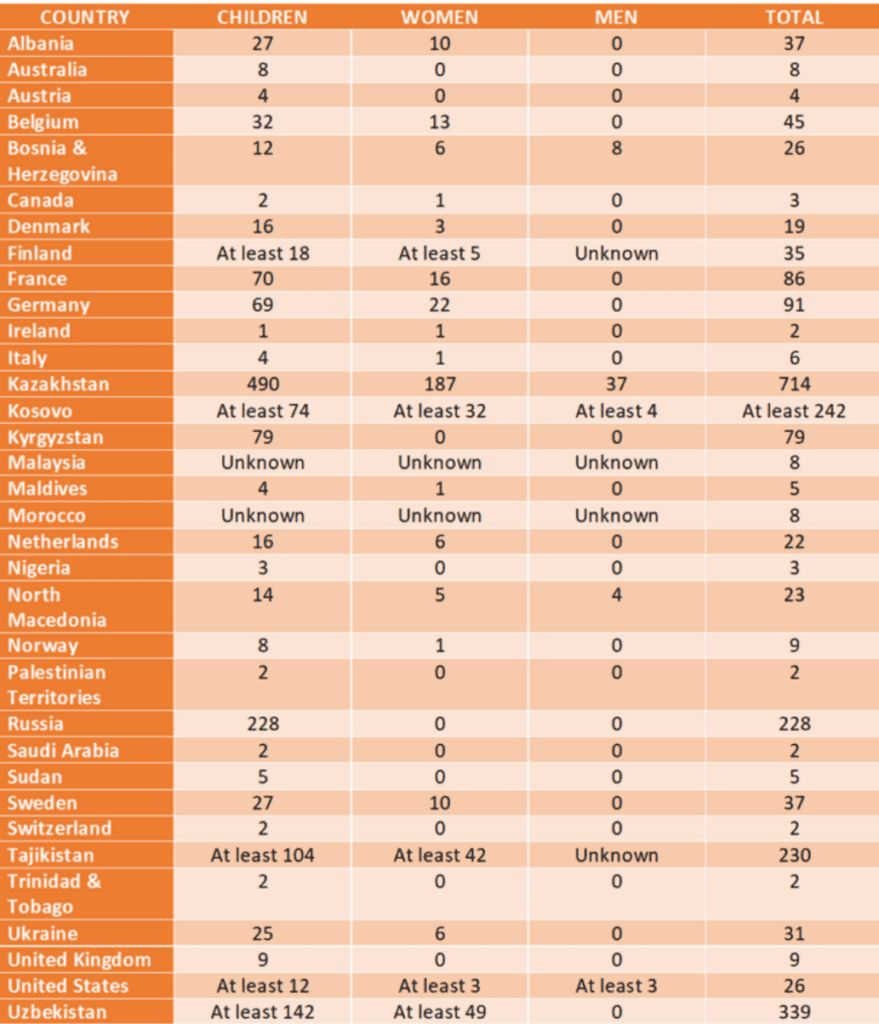

Landmark Jurisprudence: HF and others v France
On September 14th 2022, the Grand Chamber of the European Court of Human Rights (ECtHR) issued a consequential judgment in HF and others v France. In this case, two grandparents initiated proceedings at the ECtHR. The case was filed against France for their unwillingness to repatriate their grandchildren and daughter from ISIS camps in Syria.
On the one hand, the judgement laid down substantial implications and guidelines for France and other countries in similar situations. European states must now follow concrete and defined obligations flowing from this decision. Consequently, the judgement can speed up repatriation processes and force a potential political reckoning.
On the other hand, the judgement is rather disappointing. It does not order the repatriation of these individuals back to France. Moreover, it does not imply that France has the jurisdiction to protect the rights of its nationals under these circumstances.
From an international legal perspective, the ECtHR does recognize some positive obligations in the extraterritorial context in this judgment. These positive obligations stem from issues concerning the age, health, and safety of the children.
ECtHR and CRC Committee Deliver Differing Approaches in HF and others v France
Notably, the ECtHR ruling diverted from the approach used by the Committee on the Rights of the Child (CRC Committee). The CRC Committee went much further in recognizing the states’ jurisdiction in this case. The Committee found in 2020 that France exercised jurisdiction over the children detained in Syria camps.
“the state of the children’s nationality has the capability and the power to protect the rights of the children in question by taking action to repatriate them or provide other consular responses.”
cOMMITTEE ON THE RIGHTS OF THE CHILD, HF and others v France (2020).
Furthermore, on a positive note, the ECtHR’s judgement addresses misconceptions about the barriers to repatriation due to national security implications. The decisions clarified that EU states have access to the Syrian camps and have previously successfully repatriated nationals without serious consequences.
The court’s decision strongly indicates that states do not have a convincing legal argument for denying repatriation requests. This explicitly applies to vulnerable children who have had their fundamental rights violated for over four years.
Repatriated Children Integrating Well in New Countries
According to a November 2022 report released by Human Rights Watch, many of the children repatriated are successfully integrating. The report illustrates the experiences of approximately 100 repatriated children between 2019 and 2022. These countries included France, Germany, Kazakhstan, the Netherlands, Sweden, the UK, and Uzbekistan.
These children have been subjected to many years of life-threatening conditions. They had limited access to basic necessities such as food and water. They have witnessed and experienced unimaginable violence, abuse and neglect. Despite this, many of the repatriated children are doing well in school, making new friends and integrating smoothly.
Moving Forward & Recommendations
States can dramatically improve reintegration by quickly providing repatriated prisoners with birth certificates, identity cards, and other documents. The Autonomous Administration controls the Syrian ISIS camps and repeatedly urges states to repatriate their nationals. Additionally, they have requested an increase in aid to improve the prisoner’s disgraceful living conditions.
Although it is highly controversial, states must fulfil international human rights obligations. As highlighted in HF and others v France, states are responsible for protecting their citizens when they face serious harm. Children’s inhumane conditions in these camps call for governments to help end their nationals’ unlawful detention urgently.
In conclusion, the arbitrary detention of these prisoners amounts to collective punishment, which is considered a war crime under international law. According to the Convention on the Rights of the Child, children should only be detained as an “exceptional measure of last resort”. States must take responsibility by bringing detainees home, prioritizing the most vulnerable and providing rehabilitation and reintegration services.
.
Trending
-

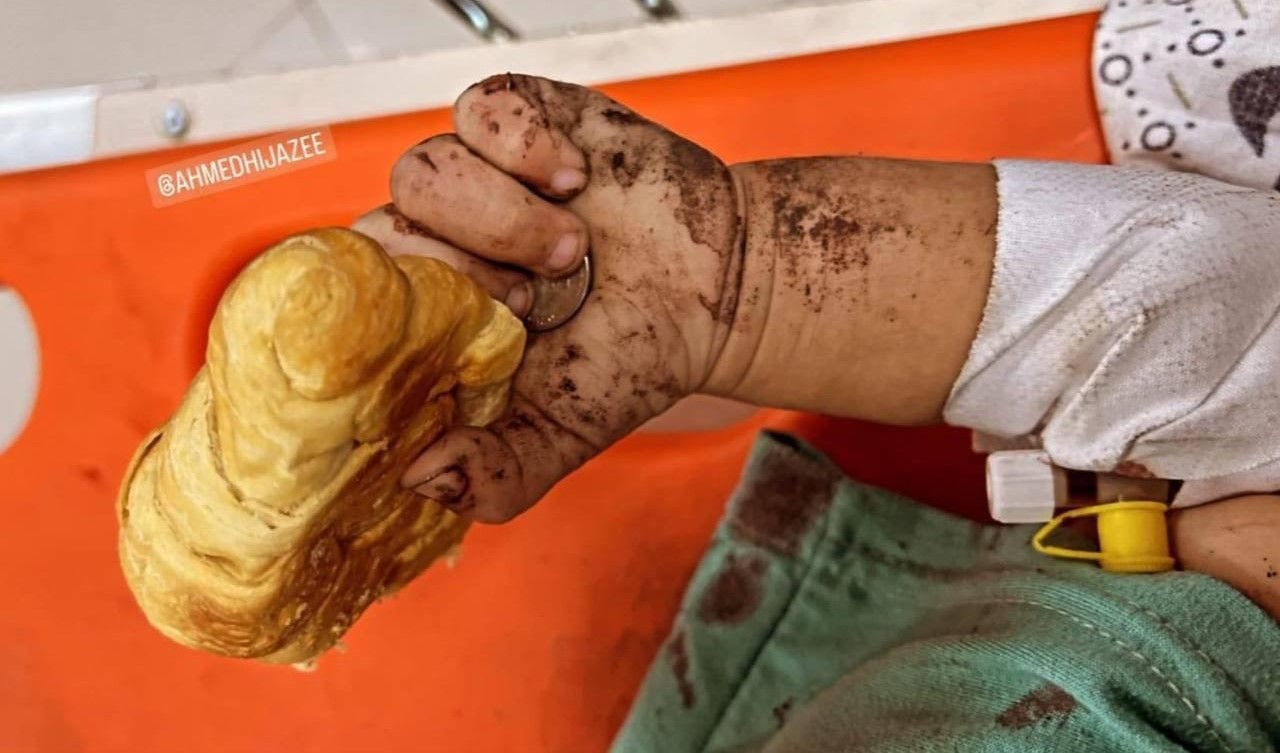

 Featured9 months ago
Featured9 months agoWorld passively watching as Israel perpetrates open-ended massacre in Gaza
-

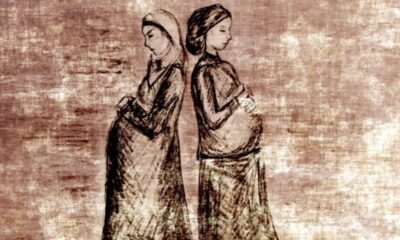

 Featured10 months ago
Featured10 months agoIsrael is Hiding Crucial Demographic Facts About Palestinians
-



 Featured2 years ago
Featured2 years agoArgentina wins the World Cup; are there any other winners?
-



 Featured4 years ago
Featured4 years ago“Do Not Waste Water Even If You Were at a Running Stream” Prophet Muhammad
-



 Featured3 years ago
Featured3 years agoHistory of the Ottoman Empire
-

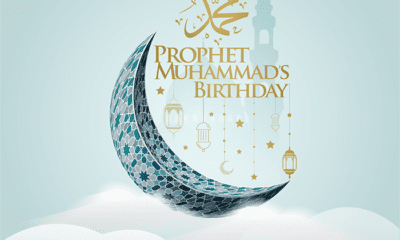

 Featured10 months ago
Featured10 months agoMuhammed: The Greatest Man to walk on Earth
-



 Featured2 years ago
Featured2 years agoChristian militia infiltrate Lebanon
-



 Featured4 years ago
Featured4 years agoFriendship is a Way For Jannah

